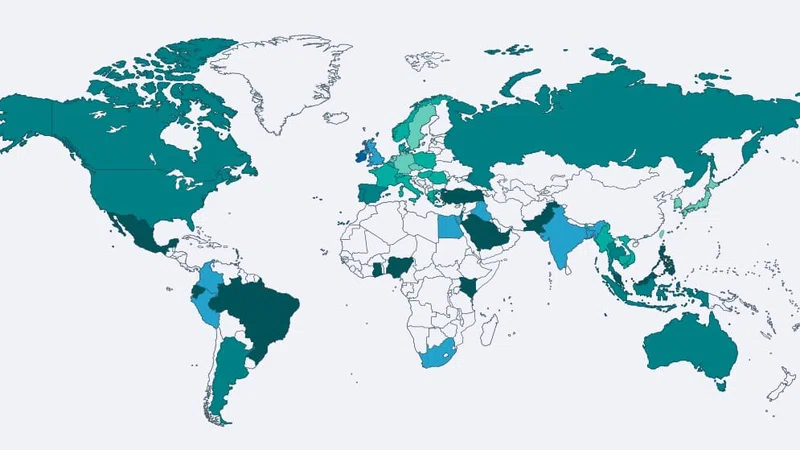Remote working situation, less cash & high digital customer activity presented new avenues of risk in financial crime & compliance. 4 billion in 2018, double $ 8 billion in 2019, the Anti-Money Laundering (AML) & Sanctions fines reached 9 billion in 2020. With ever changing regulations, customer behavior & new threats what can we expect in 2021?
Traditional Approach is Failing to Provide Diverse Coverage
Despite of enormous focus people smuggling, human trafficking and arms smuggling, and drug trafficking continue to be growing world problem. Let us discuss some key factors on why traditional approach has not been adequate to meet desirable regulatory coverage.
- Complex Entity Profiles: Financial institutions are dealing with variety of innovative products & services (e.g. FinTech) to meet new financial services demands. Additionally, globalization has created a network of customers, external parties & companies across various jurisdictions. These jurisdictions have different Know Your Customer & data gathering requirements therefore, does not provide similar and comprehensive information of all involved parties. Sometimes the sheer amount of adverse media online makes it impossible to process and structure all the risk-relevant data. Filtering this negative news can help wade through the controversies Enhance Due Diligence (EDD) presents. Network of off-shore companies in tax havens with very little information. Possibility of a Politically Exposed Person (PEP), their family members or known associates enhances complexity. Overall, correlation of high-risk jurisdictions, adverse media, PEP, sanctions list, off-shore companies with local Client Due Diligence (CDD) requirements does not provide much needed entity holistic view. Overall, traditional approach is not efficient in deriving holistic entity view from involved complex parties.
- Unable to Monitor Complex Highly Organized Criminal Networks: Traditional “rules-based” systems are limited in terms of the kind of information leveraged, covered red-flags and extend of monitoring coverage it can provide. The coverage a tradition approach can provide is fairly known therefore, criminal networks have figured out a way to “hack” the system. Most importantly, criminals can exploit the complex nature of financial systems to serve their illicit businesses such as human trafficking, drug trafficking or arms smuggling. Let us examine key complex red-flags pertaining to different organized crimes.
a) Drug Trafficking -
- International Sprawl: The production, distribution, and consumption of illicit drugs spread across the globe and involves deep-rooted criminal groups who often exploit international trade. Criminals can use illicit proceeds to buy goods for export; misrepresent the price, goods, or quality; and effectively launder the proceeds.
- Cash Focus: Criminals use cash as an anonymous payment method, making it difficult to trace a specific sale, criminal activity, or method of laundering.
- Darknet: The global payments system is changing, and criminals are exploiting new technologies and networks, such as the darknet (an encrypted virtual network), that are altering the nature of the illicit drug trade and the types of players involved.
- Challenges with the Synthetic Drug Market: Information on synthetic drug manufacturing is more limited than that available on plant-based drugs (cocaine, opiates, and cannabis). This is largely because synthetic drugs can be manufactured anywhere, as the process does not involve the extraction of active constituents from plants that have to be cultivated in certain conditions.
b) Human Trafficking –
- Expenditures on websites that advertise trafficked persons
- Transactions made in locations known to law enforcement as sex worker locations
- Frequent or excessive travel expenses (foreign, domestic, and local)
- Cash deposits made in multiple cities, often avoiding the use of bank tellers
- Repeated or excessive spending on food, lodging, or personal needs for trafficked persons by the trafficker. Similarly, the victim’s financial activities may reflect none of these expected daily expenditures.
Some non-financial red flags include:
- The suspected victim’s mobile number is linked to escort service advertisements
- An unusual number of joint account holders or authorized users on bank accounts
- Multiple victims with identical bank account details, such as phone numbers and addresses
c) Wildlife Trafficking –
- Trade kingpins often own both legal and illegal businesses and conduct wildlife trafficking in the shadow of legitimate business operations, such as trading of legal forest and agriculture products
- Most business is conducted in cash, creating a nearly invisible audit trail
- Companies used for trading are often anonymous shell companies, which makes it very hard to determine the owners’ identities
3) New Constantly Emerging Threats: As financial services industry is constantly evolving to serve increasingly demanding clientele; same new products & services are available for criminals’ exploitation as well. As research shows, it is always a “catch-up” game between criminals and law enforcements, regulators & financial institutions. Traditional systems are not agile to factor new data, typologies & investigation. Overall, unable to meet constantly emerging threats.
Solution: Graph with Machine Learning & AI Can Revolutionize Money Laundering Fight
Graph analytics, combined with other technologies like machine learning and artificial intelligence, represents a new path forward in understanding the intricate nature of such complex criminal organizations. These technologies can offer transformation on several fronts.
- Multi-Dimensional Risk Scoring for CDD/EDD: Typically, various risk areas such as Adverse Media, Sanctions, PEPs, UBO & demographic risks are calculated in silo (one dimensional) for overall entity risk scoring. Mostly, external data (e.g. Adverse Media) is included as “check-the-box”. Overall traditional “one-dimensional” risk assessment approach drives downstream inefficiencies. The solution is multi-dimensional scoring which is considering all available data, at once. Innovative Graph technology allows “linking” of all the existing data sources such as information from CIP (Client Identification Program), Adverse Media, Consortium, Ultimate Beneficiary Ownership (UBO), Sanctions, PEPs, social media, company data & public data. Leveraging graph for multi-dimensional risk scoring will provide holistic entity risk view despite of required complex profile information. Most importantly, enhanced entity view will advance downstream processes such as ongoing monitoring, investigation and reporting.
- Entity Recognition and Resolution: Graph analytics can be game-changer for entity resolution. Graph matching can provide a holistic view of all matched entities by various attributes, such as name, address, email, and taxpayer ID. The ability to unify data by bringing together entities from multiple internal and external data sources in real time or batch to create a single entity view across the enterprise is vital. Since data quality is fundamental to the success of any ML initiative, institutions that aggregate linked attributes to establish a consistent entity definition will set a strong foundation for the next stages of the journey. Entity resolution tackles the data quality challenge often encountered during the pilot stage and helps build a foundation for quality data.
- Machine Learning/AI for Monitoring & Detection: Graph analytics and ML/AI are most effective when applied over the data in a comprehensively designed, enterprise-wide financial crimes data lake. A strategic platform designed to help data scientists discover and model financial crime patterns faster and more efficiently, thereby increasing their productivity. Supervised ML using graph analytics can be a game-changer in increasing monitoring effectiveness. Detailed information gathering during onboarding is essential to identifying entities behaving outside “normal” activity. ML can be leveraged to uncover new patterns and schemes, identify instances of known criminal patters, and to score customer behaviors and non-behavioral attributes. For example, an individual transacting with a business in a high-risk country and making a high volume of virtual currency payments outside the “normal” behavior of its segment can be easily detected leveraging graph analytics and ML. Unsupervised machine learning should be applied to detect previously unmarked, unknown new schemes regarding corruption & bribery, human trafficking, wildlife trafficking, drug smuggling and more.
- Contextual Investigation & Collective Learning: Financial institutions can leverage powerful graph analytics to connect the dots between internal and external data, providing a holistic representation of networks that uncovers hidden patterns. Investigators can click through entities and their connections—represented as nodes on the graph model—to analyze networks and suspicious activities. AI can be leveraged to enhance human expertise through recommendations and next-best actions while also helping analysts gain situational awareness and learn institutional best practices. Once detected by an ML model designated by the investigator as a true positive, previously detected organized criminal cases can be leveraged to make recommendations for new evidence in a graph. This way, institutions can be ensuring collective learning.
- Regulatory Reporting: Sentiment analysis can help identify and extract opinions from suspicious activity reports, leveraging text across blogs, social media, media scans, and more. Sentiment analysis findings should feedback into the system to uncover unknown behaviors and provide case recommendations for quick decisioning. Leveraging investigation outcomes, Natural Languages Processing (NLP) can generate automatic case narratives, eliminating the manual component, reducing investigation times, and avoiding human errors. Case narratives are vital for the prosecution of suspect entities—and can help financial institutions improve investigation quality and reduce drug crime. NLP can be beneficial in ensuring the concluded criminal case has been well documented (in the case narrative) to assist law enforcement in prosecuting these highly sophisticated criminal rings.
Conclusion: Expect More Scrutiny in the Future
Many countries have been seen exposed on how financial industry and regulators have failed the public by allowing dirty money to flow unchecked around the globe. It shows how politicians, crooks, and tycoons – from Benin to Venezuela to Turkmenistan – profit at the expense of governments and ordinary people.
Innovative technologies such as graph, machine learning & AI can provide the much-needed backing and coverage to deal with upcoming amplified pressure on financial institutions.













